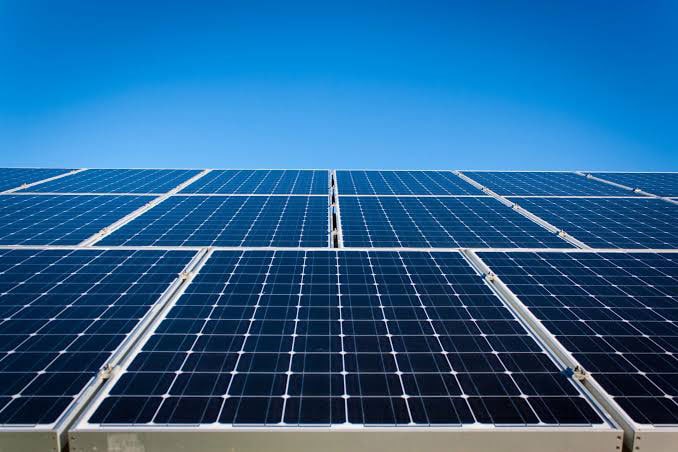Households across are rapidly moving towards installing solar to escape from soaring electricity costs and to control their power supply. The once niche product has evolved into a soaring trend. Per a report launched by the Institute for Energy Economics and Financial Analysis (IEEFA), approximately 2.2 GW (2200MW) of net-metered rooftop solar capacity had been connected to the grid by June 2024 . The selling proposition of solar panels in Pakistan, and the world over as well, was Net Metering.
Introduced in Pakistan in 2015, the policy played a crucial role in promoting solar energy adoption across Pakistan, allowing generous buyback rates – currently at PKR 27/kWh – for surplus energy sales. Independent analysis shows a 96% growth in PV capacity addition between FY23 and FY24; at the same rate, PV additions could reach 3,800 MW by FY25.
Customers installing net-metered solar setups effectively use the grid as a backup or battery source. Consumption of grid electricity decreases, while exported energy is adjusted on a unit-to-unit basis against energy imported from the grid at night. While these customers focus on their individual gains, the surge in panel installation has a pernicious impact on the cost of electricity for the less affluent customers who cannot afford it.
The current Net Metering policy places an undue burden on non-solar consumers, leading to higher electricity tariffs and undermining the sustainability of the power sector. This challenge arises due to several key factors:
• Self-consumption of generated units by solar consumers.
• Offsetting day-time exports with night-time consumption.
• Higher energy purchase costs for the grid, especially with units purchased at the National Average Purchase Price (NAPP).
These factors contribute to a national loss of approximately PKR 100 billion annually, further increasing the tariff burden on non-solar consumers. To address this issue and promote a more sustainable and equitable energy framework, it is essential to purchase solar-exported units during the day at a lower rate aligned with NAPP, instead of allowing them to be offset against night-time consumption. Further application of fixed charges should be done for solar-installed capacity, to cover the costs of maintaining transmission, distribution networks, and power plants.
Implementing these measures will ensure that solar integration not only supports environmental sustainability but also contributes to grid stability and long-term economic feasibility.
Wanton addition of solar panels can exacerbate the crisis raising the price of electricity by almost a rupee per unit, which will nudge more customers off the grid and effectively set up a death spiral for the power sector. This phenomenon is not unique to Pakistan, and many countries have taken steps to arrest the influx through different policy measures, most commonly a reduction in the buyback rates. This is perceived as a threat to distributed generation, but multiple studies have shown that it is necessary and also does not affect profitability.
In August this year, the California Public Advocates Office (PAO) released a fact sheet suggesting that rooftop solar net metering can create a USD 8.6 billion cost for non-solar customers, leading to the passage of a Net Energy Metering 3.0 (NEM) rate structure with a 75% reduction in the buyback rates and encouraging customers to purchase solar battery storage with their solar system. Lengthening the payback period cleanly divides customers between eco-conscious conservers of energy, and those motivated to make a quick buck on an investment.
Another study by two major Dutch research institutes also concluded that there would be no impact of scrapping the net metering scheme on residential PV system profitability, so long as they could increase their internal consumption. Payback periods could be maintained while benefitting more from solar generation during the daytime.
IEEFA’s report also cites the example of Vietnam, which initially offered one of the highest feed-in tariffs (FiTs) for solar power at 9.35¢/kWh, later reduced this to 5.1¢/kWh as solar capacity surged. This was followed by a cap on solar exports, limiting the amount of energy households could sell back to the grid, encouraging self-consumption and reducing strain on the national grid. Pakistan’s market has yet to mature, but course correction based on international precedents is an urgent need. The current buyback rate of 27 rupees is lower than the nationwide off-peak rates, but manifold higher than cost of utility scale renewable energy generation. Reducing this rate to 15 rupees a unit or even as low as 10 rupees – comparable to energy purchase price of XWDISCOs – could have a 63% decrease on the costs shifted to non-solar customers.
IEEFA’s study further shows that these reduced rates will not significantly increase payback periods, and customers will still ultimately be able to recover their investment with a slight delay. The international examples show that reducing buyback rates is not a radical or unfair policy, but rather a necessary adjustment as solar technology matures. While the immediate financial returns from exporting energy will decline, this does not mean that there will be no buyback at all.
The primary goal of rooftop is to reduce electricity bills and promote conscious energy consumption.
The focus must shift from short-term gains to long-term savings through reduced electricity bills. So far, the net metering regulations have significantly facilitated the adoption of solar technology in Pakistan. However, it cannot be ignored that while these regulations have reduced overall energy demand, they have increased peak demand. As a result, substantial changes may be necessary.
If the policies are revised, which they should, it may seem that the days of profiting off the grid may be winding down. However, the benefits of solar power—clean energy and lower electricity costs— remain stronger than ever.










